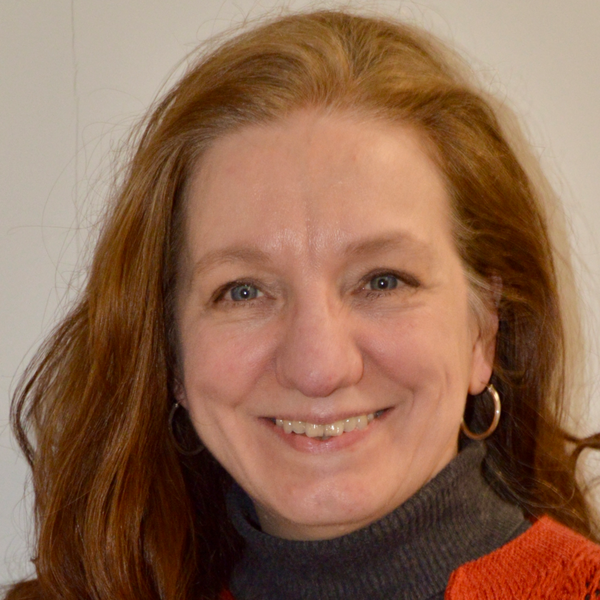Dr Catherine Tattersall
School of Allied Health, Pharmacy, Nursing and Midwifery
Senior University Teacher


+44 114 222 2446
Full contact details
School of Allied Health, Pharmacy, Nursing and Midwifery
Room 111
362 Mushroom Lane
Sheffield
S10 2TS
- Profile
-
I joined the department of Human Communication Sciences in 2012 as a University Teacher. Prior to this I was an NHS speech and language therapist in Liverpool, working on the acute wards, stroke rehabilitation ward and on the Early Supported Discharge Team for stroke. My areas of teaching include Motor Speech Disorders, Voice, and Clinical Methods.
Before I trained as a speech and language therapist I was a lecturer at the University of Manchester where I contributed to teaching on the cognitive neuropsychology modules and provided a module on aphasia and language processing. I completed my PhD in 2000 on the topic of object naming in the elderly which was supervised by Professor Andrew Ellis at the University of York. I then moved to Philadelphia, USA for a research fellowship working with Dr Myrna Schwartz at the Moss Rehabilitation Research Institute. Here my work focussed on semantic and phonological processing in individuals with aphasia.
I am a registered member of the Royal College of Speech and Language Therapists and Health and Care Professions Council. I have previously been on the Committees for both the British Neuropsychological Society and the British Aphasiology Society.
- Research interests
-
- Acquired aphasia
- Models of spoken word production
- Therapy for word finding in aphasia
Collaborators
Dr Karen Sage, University of Manchester
- Publications
-
Journal articles
- Mapping the development process of transcutaneous neuromuscular electrical stimulation devices for neurorehabilitation, the associated barriers and facilitators, and its applicability to acquired dysarthria: a qualitative study of manufacturers’ perspectives. Disability and Rehabilitation: Assistive Technology, 19(5), 1923-1934. View this article in WRRO


- Speech and language therapists' management practices, perceived effectiveness of current treatments and interest in neuromuscular electrical stimulation for acquired dysarthria rehabilitation: an international perspective. International Journal of Language & Communication Disorders, 59(2), 744-761. View this article in WRRO


- Non-invasive brain stimulation for treating neurogenic dysarthria: a systematic review. Annals of Physical and Rehabilitation Medicine, 65(5). View this article in WRRO


- Assessment of intelligibility in dysarthria: development of a Maltese word and phrase list. Clinical Linguistics & Phonetics, 33(10-11), 965-977. View this article in WRRO


- Serial order in word form retrieval: New insights from the auditory picture-word interference task. Psychonomic Bulletin and Review, 1(23), 299-305. View this article in WRRO


- “L” is for tiger: Effects of phonological (mis)cueing on picture naming in semantic aphasia. Journal of Neurolinguistics, 22(6), 538-547.


- Mimicking aphasic semantic errors in normal speech production: Evidence from a novel experimental paradigm. Brain and Language, 104(1), 89-101.


- Semantic interference during blocked-cyclic naming: Evidence from aphasia☆. Journal of Memory and Language, 54(2), 199-227.


- Facilitation and interference in phonological blocked-cyclic naming. Brain and Language, 95(1), 46-47.


- Effects of relatedness, repetition, and rate: Further investigations of context-sensitive naming. Brain and Language, 87(1), 31-32.


- The application of errorless learning to aphasic disorders: A review of theory and practice. Neuropsychological Rehabilitation, 13(3), 337-363.


- A new multiword naming deficit: Evidence and interpretation. Cognitive Neuropsychology, 19(3), 263-288.


- Last in, First to Go: Age of Acquisition and Naming in the Elderly. Brain and Language, 64(1), 146-163.


Conference proceedings
Preprints
- Dementia is our “biggest expanding caseload”: Core learning for student speech and language therapists, Cold Spring Harbor Laboratory.


- Mapping the development process of transcutaneous neuromuscular electrical stimulation devices for neurorehabilitation, the associated barriers and facilitators, and its applicability to acquired dysarthria: a qualitative study of manufacturers’ perspectives. Disability and Rehabilitation: Assistive Technology, 19(5), 1923-1934. View this article in WRRO
